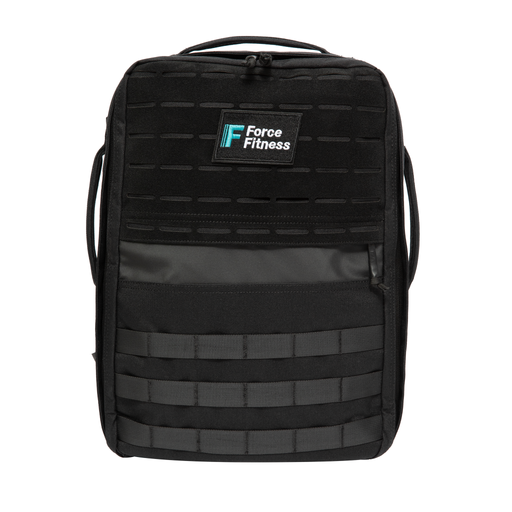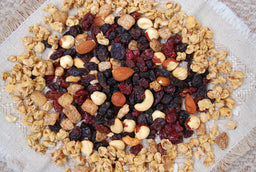
Weighted Vest or Weighted Backpack: Should You Rotate Your Rucking Gear?
Is It Really Rucking If You Use a Weighted Vest?
There’s a common debate in the rucking world: Does it only count as rucking if you use a weighted backpack — or can a weighted vest ruck be the same thing?
The answer is simple: yes, using a weighted vest is rucking. Rucking is defined as walking or hiking with added weight, regardless of how that weight is carried. Backpack, vest, sandbag, front-load plate carrier — it’s all rucking. The only difference is how the load interacts with your body. And that’s where things get interesting.
Once you accept that both are legitimate rucking methods, the next logical question becomes: Should you rotate between a weighted vest and a weighted backpack like you rotate gym training days? Again — yes, and for the same reason we rotate functional fitness programmes: each variation builds different muscles, supports different movement patterns, and prevents overuse issues.
Let’s break that down.
Why You Should Rotate Between a Weighted Vest and a Weighted Backpack
Rotating your rucking gear is just like rotating push/pull/legs at the gym — you avoid plateaus and build strength across a wider spectrum of muscle groups. Carrying weight in different ways forces your body to adapt to different postural demands and stabilisation patterns.
1. Weighted Backpack Rucking
Backpack rucking places the load high on the back, shifting the centre of gravity behind you. This activates:
-
Upper back muscles
-
Posterior chain stabilisers
-
Shoulders and trap development
-
Lower back endurance
In a study on load carriage mechanics, researchers found that backpack loads significantly increase spinal erector and shoulder stabiliser activation compared to front- or torso-loaded systems (Knapik et al., Military Medicine, 2004). This makes the weighted backpack ideal for strengthening your back, lats, traps, and posture.
Backpack rucking also mimics military-style load carriage more closely, which is why many ruck events emphasise it.
2. Weighted Vest Rucking
A weighted vest distributes load evenly across the torso. This shifts the stimulus away from the shoulders and onto:
-
Core stabilisation muscles
-
Hip flexors and glutes
-
Lower-body strength
-
Gait mechanics & speed stability
Research comparing torso-loaded vs. back-loaded weight found that vest-style loading increases lower-limb muscle activation, particularly in the quads, glutes, and hips (Lenton et al., Journal of Sports Science & Medicine, 2018).
Because the weight stays centred, a weighted vest forces your legs and core to do more work — similar to resistance running or sled dragging.
It also reduces shoulder fatigue, making it a great tool for long-distance conditioning days.
3. Rotating the Two Improves Conditioning & Prevents Injury
Using the same load carriage pattern repeatedly can cause overuse issues — especially in the shoulders, lower back, and hips. Rotating between the two:
-
Reduces repetitive strain
-
Improves posture variability
-
Builds more well-rounded functional strength
-
Improves gait mechanics
-
Strengthens stabiliser muscles through different load angles
-
Keeps training mentally fresh
In training practice, combining both styles mimics real-world movement: sometimes you carry load on your back, sometimes on your chest, sometimes evenly distributed.
This is hybrid fitness at its best.
A Weekly Rucking Rotation Plan
Below is a simple but effective 4-day rucking rotation designed to build strength, endurance, and resilience.
Day 1 — Weighted Vest Ruck (Core & Legs Focus)
-
45–60 mins
-
Flat to moderate terrain
-
Steady pace
-
Encourage good posture and stride mechanics
Day 2 — Weighted Backpack Ruck (Back & Shoulders Focus)
-
45–90 mins
-
Add hills or inclines
-
Focus on maintaining upright posture under back-loaded weight
Day 3 — Unweighted Speed Ruck / Brisk Hike (Gait & Recovery)
-
30–60 mins
-
Keep a fast but sustainable pace
-
Serves as active recovery and reinforces efficient footwork
Day 4 — Rest or Light Mobility
-
20–30 mins stretching or band work
-
Optional light jog or walk
-
Rotator cuff and hip mobility recommended
Optional: Weekends
-
Long unweighted hike
-
Or a mixed-load endurance day: vest for first 3 miles, backpack for last 3
This rotation mirrors strength training principles: change the stimulus each session to maximise development and prevent stagnation.
 Let’s Summarise
Let’s Summarise
To answer the big questions:
-
Yes, using a weighted vest is rucking.
-
Yes, you should rotate between a weighted vest and a weighted backpack.
Both are legitimate pieces of rucking gear — each providing unique benefits. A weighted backpack strengthens the upper back, traps, and posterior chain. A weighted vest challenges the core, legs, and hip stabilisers.
Rotating the two builds more complete functional strength, improves posture and resilience, and reduces the risk of repetitive strain. If you want to get the most out of your outdoor training — and build hybrid strength the smart way — swapping between these two tools is the way forward.
















